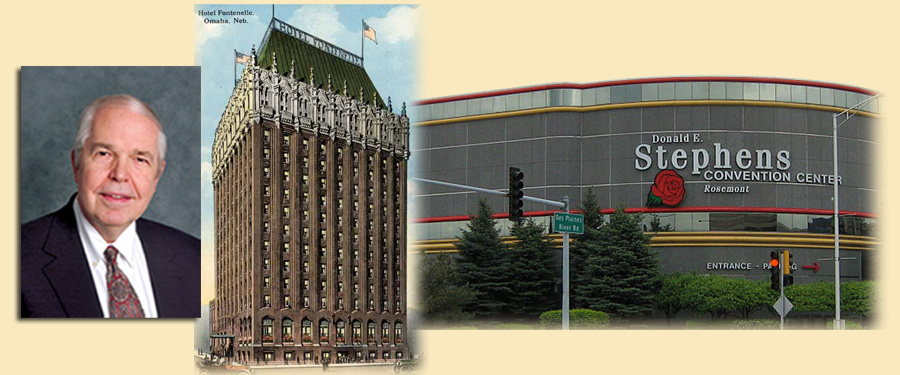
I left New Hampshire on Friday, August 7, heading to Illinois where I and family members spent a weekend with some friends. Then on Monday it was to the World’s Fair of Money at the Convention Center in Rosemont. The first event of the show was the Professional Numismatists Guild banquet that evening. It was a grand event, nice camaraderie, good food, and a fine way to start the show.
In contemplating American Numismatic Association conventions back to the first one I attended in 1955 (held in Omaha, Nebraska), things have changed dramatically. In the early days the emphasis was on the dealers’ bourse, with items to buy, sell and trade. At the time nearly all coins, tokens and medals were kept by dealers and others in paper envelopes, usually measuring two by two inches square, with a flap in the back, and with information written or typed on the face. There were no grading standards and to “do” a convention and check different inventories required a lot of time. It was not unusual to spend several days non-stop buying and selling.
Activity varied from location to location, from show to show. I remember that the 1957 event in Philadelphia was particularly dynamic, and in front of my bourse table a line of a half dozen or more people was formed at nearly all times, waiting their turn to show me coins or to ask to see items of interest.
Fast forward to 2015, the Internet era, certified grading and more. Today, nearly all American coins, tokens and medals of value are in plastic certified holders, and many paper money notes are in holders as well. No longer is it necessary to spend hours looking through stocks. For someone seeking to fill a want list — such as building a type set of United States coins, buying Morgan dollars or the like — a show can be completed in a day. If you are “fussy,” such as Melissa Karstedt is when buying coins for certain of our clients, then it is necessary to go beyond the labels on holders and examine the coins personally. However, even this can be done in two days.
Adding to the equation is the unusual fact that today in 2015 time is more precious, more valuable than ever before — never mind that we have the computer, labor-saving devices, and other technologies. The recent ANA event began with PNG dealer days (which I did not attend), then with the show beginning on Tuesday, August 11, and ending on Saturday. This was far more time than the average attendee needed. While dealers slogged it out from start to finish, nearly all of the clients, researchers and others I knew who were not dealers came and went in a period of two or three days. Quite a few arrived on Wednesday and left on Friday or Saturday.
For me, I was active from start to finish and not in carefully examining items in the bourse, but meeting with old friends, making new ones, and appearing in several “Money Talks” features, as well as in meetings of specialized clubs. All too suddenly the week was ended and I was on the way back home.
I cannot help but think that the future will require some adjustments in the World’s Fair of Money. A long convention provides time to conduct programs and have meetings of specialized groups as well as to hold multiple auction sessions. Against it is the value of time, the cost of hotels and more. The Internet is rapidly taking over much of what conventions used to do. Time was when we conducted an auction sale we filled a room with chairs, and often had to call in for more. Today, both Stack’s Bowers Galleries and Heritage (each offering sales at the ANA convention) had some sessions with just a handful of people in the audience. The results were excellent, however, as the majority of bids arrived by Internet or on the telephone. This phenomenon is hardly new. I recall a number of years ago when we sold the Dice-Hicks Collection of Hard Times tokens at auction. A member of our company who was not in attendance telephoned me during the sale and asked: “How many people are in the audience?” I replied: “There were nine, but one went to the rest room and now there are eight.” Then: “How are the prices?” My answer: “Everything is exceeding estimates, prices are sky-high with Internet and telephone bids.”
I believe that most of us agree that technology is all for the best. The imaging of coins, tokens, medals and paper money is now superb, although I have always kept things I collect, primarily tokens, medals and obsolete paper money, in safe deposit boxes, it required visiting the boxes to enjoy them. Today, I take high-resolution images of each before putting them into storage, and can enjoy my collection on my laptop computer. This is a common practice and many others do the same.
As you read these words summer is coming to an end. I hope it has been enjoyable for you, numismatically as well as in other ways.





